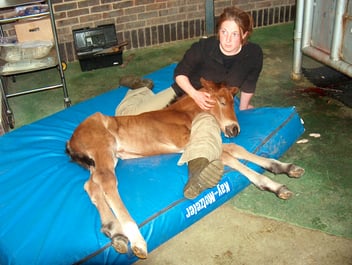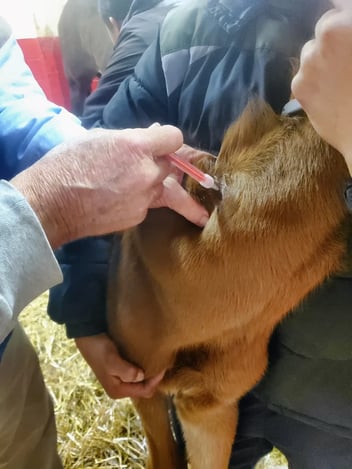Technique Tuesday - Foetal Sexing
This Technique Tuesday, our co-founder and equine veterinary surgeon, Kevin Corley, is sharing his expertise on Foetal Sexing. Have questions or comments? Drop them in the comment form below, and Kevin will be more than happy to help! Stay tuned for more exciting insights and techniques.
Equipment
Stocks with an adjustable bar side to protect the ultrasound machine and the veterinarian.
Ultrasound machine with colour Doppler.
Probe phased array or sector probe between 1-5 MHz typical distance required 15-20cm depth.
Clipping: clipping is not necessary in thoroughbreds; alcohol can be used for contact. In heavier coated animals, clip between the xiphoid and the udder midline or 10cm off midline depending on the position of the foal.
Technique
Knowing the sex of the foal a mare is carrying can be useful for many reasons. Firstly, it can help with future breeding plans. Secondly, it can help with planning sales. Some owners might be more likely to send a mare to the sales if they knew she was carrying a filly. The sex of the foetus may also influence the reserve price set. Some owners want a certificate from the vet stating that the mare is believed to be carrying a colt to try and enhance the sales value. If you want a filly from the mare and you know she is carrying a filly, you might be more likely to sell a female weanling.
Lastly, it may affect whether you choose to insure the pregnancy.
The foetus can be sexed in two ways – either by rectal examination and trans-rectal ultrasound or by ultrasound through the abdominal wall. The time window where foetal scanning can be achieved is smaller and it can be harder to get the necessary images rectally than transabdominally. There are the risks to the mare of protracted rectal examination to be considered too.
There are specific times during the pregnancy that foetal sexing can be performed.
These are as follows:
- Trans-rectal scanning: 55 to 70 days, 110 to 140 days.
- Trans-abdominal scanning: 120 days to 260 days.
Smaller foals can be sexed slightly later than 260 days, and bigger foals can be sexed slightly earlier than 120 days.
For trans-abdominal sexing, the sex of the foetus is determined by the appearance of the gonads.
The gonad in colts is heterogenous. There is no clear differentiation between the cortex and the medulla. Colts have a central vein in the gonad which is relatively straight. See illustration one.

Fillies have a distinct cortex and medulla in the gonads, divided by a thin concentrical line. There are blood vessels within the junction between the cortex and medulla, which can be highlighted by colour Doppler ultrasonography.
It can be hard to see a complete ring of blood vessels on one section but it should be able to be traced through different planes. See illustration two.





